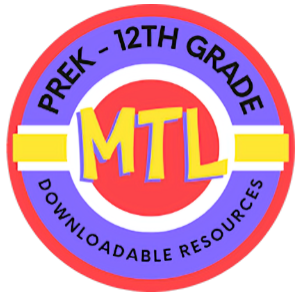Category: By Subject
- Home
- /
- Shop
- /
- By Subject
- /
- Page 3
Showing 41–60 of 1567 resultsSorted by latest
-
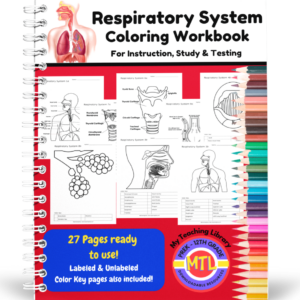 $4.00Buy Now
$4.00Buy NowComplete and detailed, this Respiratory Coloring Workbook is perfect for instruction, study and even testing high school level Biology and Anatomy students. There are 9 different illustrations (diagrams) and each have three types of pages:
a: labeled
b. unlabeled with blank color key
c. unlabeled
Detailed teacher notes are included which give suggestions on the use of each.Respiratory Coloring Workbook Preview Video
GET THE ENTIRE BIOLOGY / ANATOMY COLORING WORKBOOK BUNDLE!
-
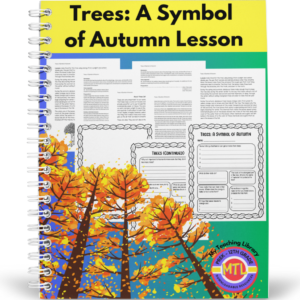 $2.50Buy Now
$2.50Buy NowA multi-age lesson to teach students (1st – 5th grades) about trees! The lesson is designed as a Fall (Autumn) outdoor/indoor activity lesson as the leaves are changing colors but can be easily converted to an indoor activity only. If using as an indoor only activity, be sure to have photos of trees to incorporate into the lesson.
Students will learn about:-
What trees provide
-
Aspects of a ‘living’ tree (how they get water, nutrients and breathe)
-
Parts (and their function) of a tree: roots, trunk, bark, branches, leaves
-
How leaves make food
-
Types of trees: deciduous and evergreen
Includes:
– Teacher lesson notes (guide)
– Student informational text
– Student activity worksheet pages
– Answer keys -
-
 $5.00Buy Now
$5.00Buy NowHaiku is a Japanese poetry form and uses just a few words to capture a moment and to create a picture in the reader’s mind! This resource will teach students how to write a Haiku and includes a teaching poster, 20 Fall related picture prompts and 37 different publishing papers for students!
-
Sale!
 Buy Now
Buy Now$60.00Original price was: $60.00.$50.00Current price is: $50.00.This complete bundle is a full year of 8th grade science! Comes complete with two student textbooks and two teacher editions:
Natural Science: Biology & Chemistry – Grade 8 (Student Edition)
Natural Science: Biology & Chemistry – Grade 8 (Teacher’s Edition)
Natural Science: Physics & Earth Science – Grade 8 (Student Edition)
Natural Science: Physics & Earth Science – Grade 8 (Teacher’s Edition)Preview video of one of the student textbooks: Biology & Chemistry
See the table of contents for each student edition below:
-
Sale!
 Buy Now
Buy Now$60.00Original price was: $60.00.$50.00Current price is: $50.00.This complete bundle is a full year of 7th grade science! Comes complete with two student textbooks and two teacher editions:
Natural Science: Physics & Earth Science – Grade 7 (Student Edition)
Natural Science: Physics & Earth Science – Grade 7 (Teacher’s Edition)
Natural Science: Biology & Chemistry – Grade 7 (Student Edition)
Natural Science: Biology & Chemistry – Grade 7 (Teacher’s Edition)Watch a short video preview of the Physics & Earth Science student edition here.
See the table of contents for each student edition below:
-
Sale!
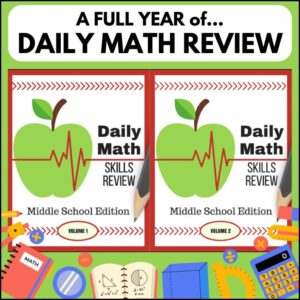 Buy Now
Buy Now$20.00Original price was: $20.00.$18.00Current price is: $18.00.One FULL year of daily math skills review for middle school students (180 days). Each day, students will be given 3 questions and designed to review a multitude of middle school math skills.
See below description for skills covered:
-
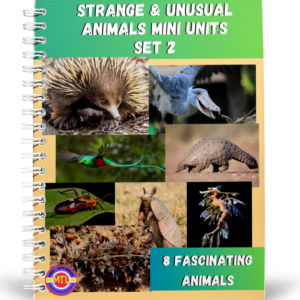 $8.00Buy Now
$8.00Buy NowStudents will love learning about 8 different ‘strange and unusual’ animals in this set of eight mini units! In each mini unit, students will learn all about one very uncommon animal, what they look like, where they live (habitat and location), what they eat, interesting facts, interactions with humans, if they are kept as pets / have been domesticated and more!
Animals in this set:
– Assassin Bug
– Moloch
– Quetzal
– Sea Dragon
– Shoebill Stork
– Armadillo
– Pangolin
– EchidnaPages include colorful photos and will keep students interested as they learn about each animal. After reading, students will have 2 notebooking pages to complete about each animal.
Also included: Taking it Further – Additional suggestions for building additional knowledge and fun extended activities!
Also, check out…Strange and Unusual Animals | Set 1
-
 $5.00Buy Now
$5.00Buy NowHelp your kids get the most from church with My Teaching Library’s Sermon Notes for Kids! This product includes 4 different designs of sermon notes which will allow your kids to:
- Take notes during each service
- Answer questions for self-reflection
- Keep a record of every service they’ve attended
Parents then can use their child’s completed sermon notes to engage in conversation and extend their child’s learning by discussing the sermon’s message, their child’s understanding and how they may apply what was taught!
This resource is for family use only.
Need these sermon notes to use in a church ministry? Purchase Sermon Notes w/ Ministry License! -
Sale!
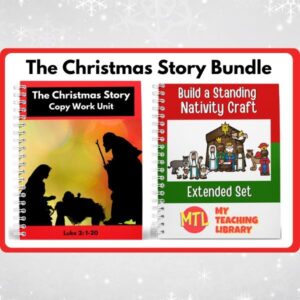 Buy Now
Buy Now$8.00Original price was: $8.00.$7.00Current price is: $7.00.Teach children the true meaning of Christmas with the Christmas Story Bundle. The bundle includes two resources:
– Christmas Story Copy Work Unit
– Build a Nativity Extended Set | Christmas CraftUsing the first resource, children will copy and illustrate Luke 2 of Christ’s birth. With the second, they will create a craft displaying the nativity scene.
-
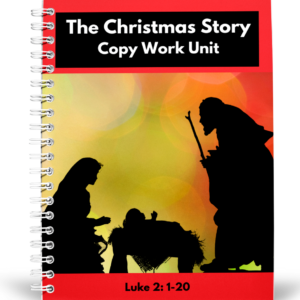 $3.00Buy Now
$3.00Buy NowStudents will read, illustrate and copy the Christmas story as told in Luke 2. Three versions are provided so that you may have your child use the one you most prefer: KJV, NIV, ESV.
This unit is divided into four days. On each day, students will read part of the story, illustrate what they’ve read and then copy it. Six different lined papers have been provided to meet the needs of individual students. -
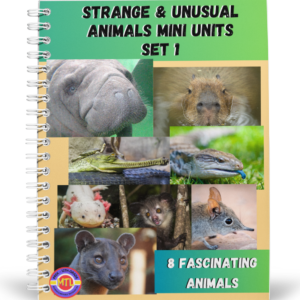 $8.00Buy Now
$8.00Buy NowStudents will love learning about 8 different ‘strange and unusual’ animals in this set of eight mini units! In each mini unit, students will learn all about one very uncommon animal, what they look like, where they live (habitat and location), what they eat, interesting facts, interactions with humans, if they are kept as pets / have been domesticated and more!
Animals in this set:
– Gharial
– Dugong
– Capybara
– Blue-Tongued Skink
– Axolotl
– Aye Aye
– Elephant Shrew
– FossaPages include colorful photos and will keep students interested as they learn about each animal. After reading, students will have 2 notebooking pages to complete about each animal.
Also included: Taking it Further – Additional suggestions for building additional knowledge and fun extended activities!
Check out: Strange and Unusual Animals | Set 2
-
Sale!
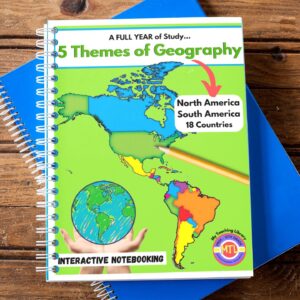 Buy Now
Buy Now$80.00Original price was: $80.00.$50.00Current price is: $50.00.This full-year notebooking project will have students ‘thinking like a geographer! They’ll research 18 different countries and record important information that will have them investigate and record using a 5 Themes of Geography lens: location, place, human environment interaction, movement and regions
As the students proceed and create a beautiful project, they’ll…
- – Learn about each country
- – Demonstrate knowledge of and ability to synthesize information and write about each country through a 5 themes of geography lens.
- – Create a wonderful project displaying their learning.
Included Countries:
South America- – Argentina
- – Bolivia
- – Brazil
- – Chile
- – Columbia
- – Peru
- – Uruguay
- – Venezuela
North America
- – Canada
- – United States
- – Mexico
- – Costa Rica
- – Belize
- – El Salvador
- – Guatemala
- – Honduras
- – Nicaragua
- – Panama
-
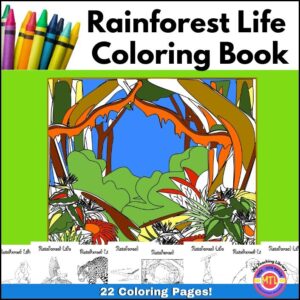 $3.00Buy Now
$3.00Buy NowStudying the rainforest? Looking for a coloring book with animals from the rainforest? This coloring book includes 22 pages ready to color. Wildlife includes: ant, anteater, fruit bat, coati, cassowary, chimpanzee, crocodile, gecko, gorilla, iguana, jaguar, macaw, howler monkey, orangutan, piranha, poison dart frog, python, sloth, tapir, tiger and toucan.
-
Sale!
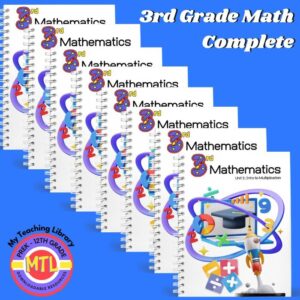 Buy Now
Buy Now$40.50Original price was: $40.50.$35.00Current price is: $35.00.3rd Grade Math Complete is an 8 unit program that covers all of the important skills and concepts typically covered in 3rd grade. Each unit includes the student and teacher edition. This resource can be used within a classroom setting, co-op or with individual students. Because it can be used within a group setting, you’ll find many activities for students to complete in pairs of 2. If you are homeschooling multiple children close in age, it would be easy to adapt and teach students together. If you are homeschooling a single child, you can easily adapt these activities through your one-on-one interaction!
You do not need to use the entire program if you are only wanting to focus on one or a few specific Math skills and concepts. If this is the case, you can purchase each unit separately.
Units:
- – Unit 1: Intro to Multiplication
- – Unit 2: Geometry: Area, Arrays and Multiplication
- – Unit 3: Reviewing Addition & Subtraction within 1,000
- – Unit 4: Relating Multiplication and Division
- – Unit 5: Fractions – Number Lines, Equivalent & Comparing
- – Unit 6: Measurement – Length, Time, Volume & Weight
- – Unit 7: Geometry – 2 Dimensional Shapes, Area & Perimeter
- – Unit 8: Review of 3rd Grade Skills & Concepts
-
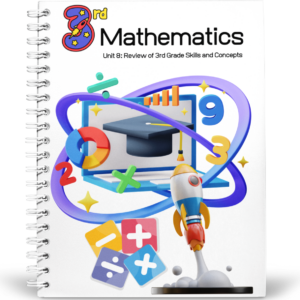 $5.00Buy Now
$5.00Buy NowIn this unit, students revisit major work and fluency of 3rd grade math skills and concepts including comparing, adding, and subtracting fractions, multiplying and dividing within 1,000, and using the standard algorithm to add and subtract multi-digit numbers.
Includes: Student and Teacher Editions
Size: 256 pages -
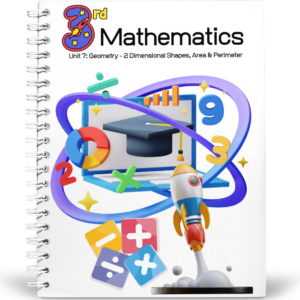 $5.00Buy Now
$5.00Buy NowIn this unit, students reason about attributes of two-dimensional shapes, calculate area and learn about perimeter. Students learn to classify broader categories of shapes (quadrilaterals and triangles) into more specific sub-categories based on their attributes. For instance, they study examples and non-examples of rhombuses, rectangles, and squares, and come to recognize their specific attributes. Students also expand their knowledge about attributes that can be measured. In this unit, students learn the meaning of perimeter and find the perimeter of shapes. They consider geometric attributes of shapes (such as opposite sides having the same length) that can help them find perimeter. As the lessons progress, they consider situations that involve perimeter, and then those that involve both perimeter and area. These lessons aim to distinguish the two attributes (which are commonly confused) and reinforce that perimeter measures length or distance (in length units) and area measures the amount of space covered by a shape (in square units). At the end of the unit, students solve problems in a variety of contexts. They apply what they learn about geometric attributes of shapes, perimeter, and area, to design a park, a West African wax print pattern, and a robot. They then solve problems within the context of their design.
Includes: Student and Teacher Editions
Size: 318 pages -
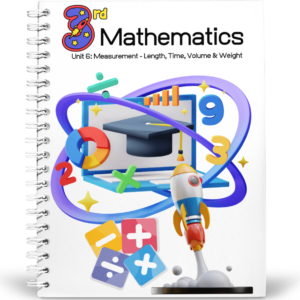 $4.50Buy Now
$4.50Buy NowIn this unit, students measure length, weight, liquid volume, and time. They begin with a study of length measurement, building on their recent work with fractions. Students will explore length measurements in halves and fourths of an inch. They use a ruler to collect measurements and then display the data on line plots, learning about mixed numbers and revisiting equivalent fractions along the way. Next, students learn about standard units for measuring weight (kilograms and grams) and liquid volume (liters). To build a sense of weights such as 1 gram or 1 kilogram, students hold common objects such as paper clips and bottles of water. From there, students move on to measure time. In the final section of the unit, students make sense of and solve problems related to all three measurements. The work here allows students to continue to develop their fluency with addition and subtraction within 1,000 and understanding of properties of operations. It also prompts them to use the relationship between multiplication and division to solve problems.
Includes: Student and Teacher Editions
Size: 228 pages -
 $5.00Buy Now
$5.00Buy NowIn this unit, students will learn about fractions, naming parts, building from units, locating on a number line, equivalent fractions, and how to compare fractions with the same denominator and the same numerator.
Includes: Student and Teacher Editions
Size: 338 pages -
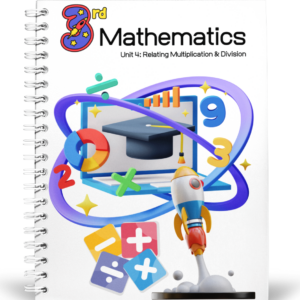 $6.00Buy Now
$6.00Buy NowThis unit introduces students to the concept of division and its relationship to multiplication. Previously, students learned that multiplication can be understood in terms of equal-size groups. The expression 5 x 2 can represent the total number of objects when there are 5 groups of 2 objects, or when there are 2 groups of 5 objects. Here, students make sense of division also in terms of equal-size groups. For instance, the expression 30 ÷ 5 can represent putting 30 objects into 5 equal groups, or putting 30 objects into groups of 5. They see that, in general, dividing can mean finding the size of each group, or finding the number of equal groups. Students use the relationship between multiplication and division to develop fluency with single-digit multiplication and division facts. They continue to reason about products of two numbers in terms of the area of rectangles whose side lengths represent the factors, decomposing side lengths and applying properties of operations along the way. As they multiply numbers greater than 10, students see that it is helpful to decompose the two-digit factor into tens and ones and distribute the multiplication. Toward the end of the unit, students solve two-step problems that involve all four operations.
Includes: Student and Teacher Editions
Size: 431 pages -
 $5.00Buy Now
$5.00Buy NowIn this unit, students work toward the goal of fluently adding and subtracting within 1,000. They use mental math strategies developed in grade 2 and learn algorithms based on place value. Students work with a variety of algorithms, starting with those that show expanded form, and moving toward algorithms that are more streamlined and closer to the standard algorithm. Understanding of place value also comes into play as students round numbers to the nearest multiple of 10 and 100. Students do not need to know a formal definition of “multiples” until grade 4. At this point, it is enough to recognize that a multiple of 10 is a number called out when counting by 10, or the total in a whole-number of tens (such as 8 tens). Likewise, a multiple of 100 is a number called out when counting by 100, or the total in a whole-number of hundreds (such as 6 hundreds). Students use rounding to estimate answers to two-step problems and determine if answers are reasonable.
Includes: Student and Teacher Editions
Size: 374 pages
